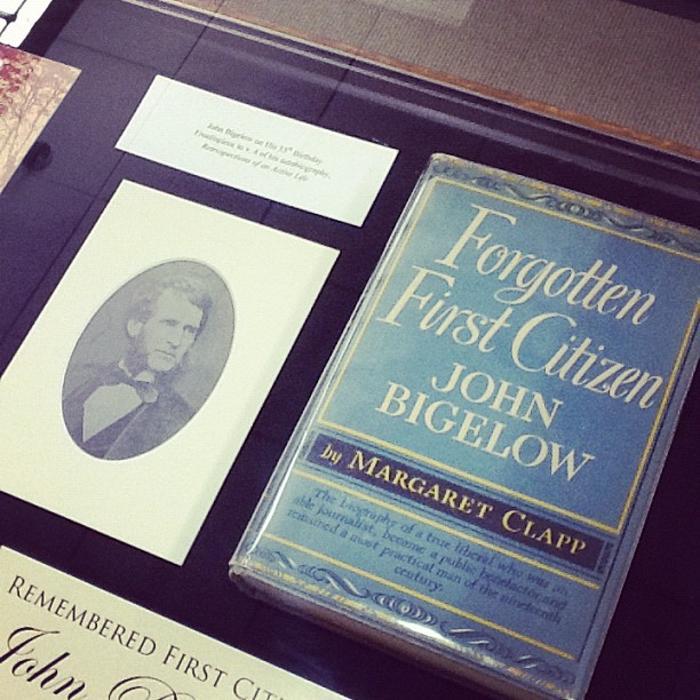He played a major role in the creation of the New York Public
Library. Appointed consul general to Paris by President Abraham Lincoln, he helped dissuade a number of European countries from supporting the Confederacy during the Civil War.
While in Paris, he also discovered the lost manuscript of Benjamin Franklin’s autobiography, which he edited and published in 1868. He served as New York’s secretary of state, helped expose the political corruption of William “Boss” Tweed’s Tammany Hall in New York City and resolved a dispute over the route of the Panama Canal. And along with the poet William Cullen Bryant, he was an owner and editor of the New York Evening Post.
An intersection in New York City even bears his name, John Bigelow Plaza.
Yet for all his lofty achievements, few people are familiar with the story of Bigelow, a lawyer, statesman and distinguished man of letters.
“There was no room for laziness in his schedule. Hours empty of thought or purposeful activity did not exist,” Margaret Clapp wrote in her 1947 Pulitzer Prize-winning biography of Bigelow, Forgotten First Citizen.
One hundred years after he died, Bigelow may finally get his due. To help mark the centennial of Bigelow’s death, Union has embarked on an ambitious project to pay tribute to its most versatile alum, who graduated in 1835.
Called “Remembered First Citizen” in a nod to Clapp’s biography, the project kicked off Monday with an exhibit in Schaffer Library showcasing some of the 4,000 titles from Bigelow’s personal library, a journal he kept in the last months of his life (he was 94 when he died Dec. 19, 1911), and artifacts such as his death mask, typewriter and working papers for his groundbreaking edition of the Franklin autobiography.
In February, a massive digital index to the College’s John Bigelow Correspondence File, which consists of more than 20,000 letters from prominent political, cultural and literary giants, is expected to go online. Among those who wrote to Bigelow were Theodore Roosevelt, Andrew Carnegie, Charles Dickens, Mark Twain and Frederick Law Olmsted, the landscape architect who co-designed Central Park.
The letters, measuring 80 linear feet when stacked together, touch on Bigelow’s activities as the French consul during the Civil War and reactions to the Lincoln assassination; the founding of the Panama Canal; and the creation of public art works and notable institutions in New York, including the Metropolitan Museum of Art, Central Park and the New York Public Library.
The College has paid homage to Bigelow in the past. Since 1916, there has been an endowed professorship in his name. And in 2008, President Stephen C. Ainlay established the John Bigelow Medal to recognize friends of the College who have contributed to the advancement of humanity. The first recipient was Paul LeClerc, who recently retired as president of the New York Public Library.
“This project is not only one of remembrance but of revival,” said Annette LeClair,
librarian and head of technical services at Schaffer, which along with the New York Public Library houses the largest collection of Bigelow material.
“His interests and influence were of remarkable breadth and significance in American life.”
To read more about the project in the Times Union, click here.
